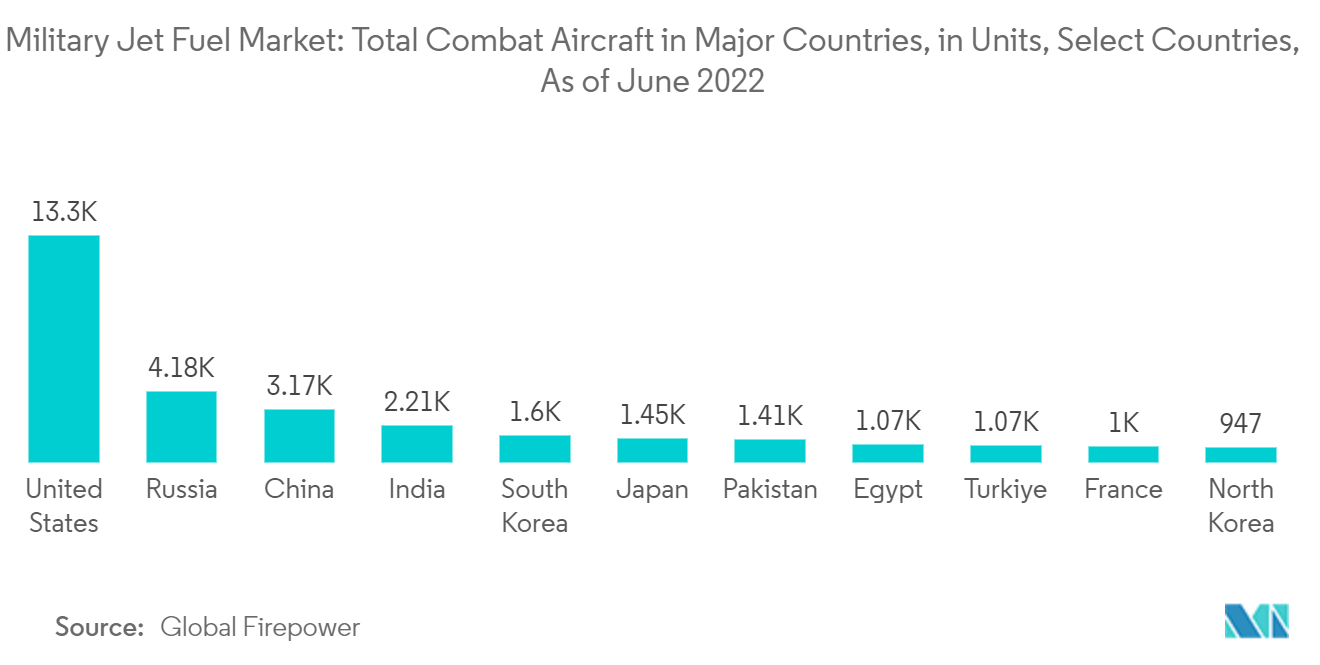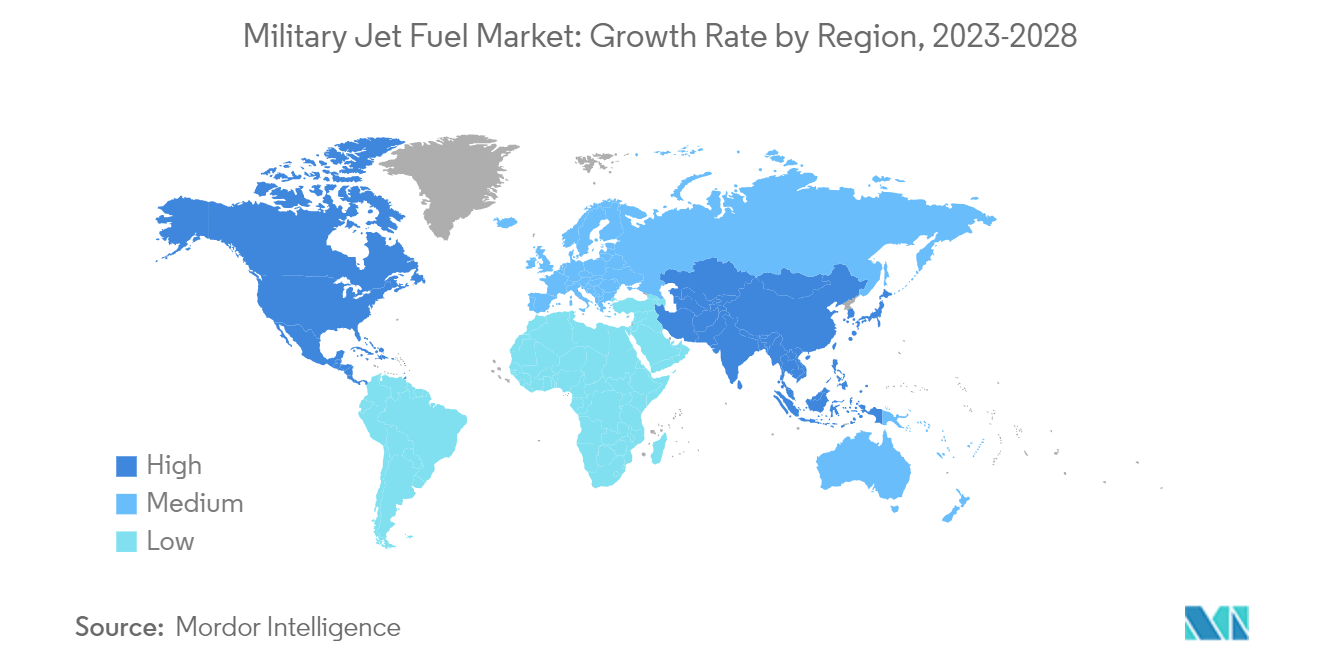Market Trends of Military Jet Fuel Industry
Renewable Aviation Fuel to be the Fastest Growing Market
- Renewable Aviation Fuel (RAF), often called Sustainable Aviation Fuel (SAF), is a clean substitute for fossil jet fuels. SAF is produced from sustainable resources, such as waste oils from a biological origin, agriculture residues, or non-fossil CO2. RAF is a drop-in fuel, which means that it can be blended with fossil jet fuel and that the blended fuel requires no special infrastructure or equipment changes. The first flight, which used blended biofuel, began in 2008, and over 370,000 flights have taken to the skies using RAF since 2016.
- The aviation industry is one of the world's biggest carbon emitters, and this carbon emitted at higher altitudes is potentially more harmful than sea level emissions. The industry is constantly trying to reduce its emissions, and advanced biofuels are a viable option that is a 'drop-in' solution, i.e., it can be used by the existing infrastructure.
- Governments across the globe are implementing aviation rules and policies to reduce their carbon footprint. For instance, flights entering the European Union must pay for CO2 emissions due to the EU Emission Trading System (ETS) since 2012. Sustainable aviation fuels are currently being discussed as an important way to reduce aviation's greenhouse gas emissions.
- Under the Defense Protection Act 2014, the United States Department of Energy (DOE) co-funded the construction of three integrated bio-refineries with the capacity to produce hydrocarbon fuels that meet military specifications for JP-5 (jet fuel used primarily by the United States Navy), JP-8 (jet fuel used mostly by the US Air Force), or F-76 (diesel).
- Renewable fuel production is getting support from many federal agencies, including the United States DOE and the Federal Aviation Administration, for large-scale commercialization.
- Further, companies, such as Honeywell, employed the renewable jet fuel process technology for the United States Navy and Air Force as part of a joint program for the United States Defense Energy Support Center (DESC) for alternative fuel testing and certification.
- In December 2021, Aemetis signed an agreement to purchase a 125-acre land from a former United States Army Facility to produce 90 million gallons per year of sustainable aviation fuel, renewable diesel, and other byproducts. The plant is expected to supply the US military trucks and air force with ultra-low carbon renewable fuels to reduce greenhouse gas (GHG) emissions and other pollutants associated with conventional petroleum-based fuels. Thus, such initiatives are likely to increase demand for sustainable aviation fuel in the military sector during the forecast period.
- According to Global Firepower, aircraft fleet strength by country, several countries own a large fleet of aircraft. For instance, the United States owns around 13,300 airplanes, while Russia, China, and India own 4,182, 3,166, and 2,210 planes, respectively.
- With extensive fighter aircraft fleets, numerous older generation aircraft reach the end of their operational lights leading to an increased demand for upgrading and modernization of these aging aircraft each year.
- Consequently, this drive for upgrades and modernization results in a higher need for jet fuel as these enhancements effectively extend the operational life span of the fighter aircraft.
- Hence, such increasing development in the aviation fuel sector and the need to cut carbon emissions are expected to drive the renewable aviation fuel market in the defense sector during the forecast period.

Asia-Pacific to Dominate the Market
- The Asia-Pacific region is the largest consumer of jet fuel, consisting of several massive consumers, such as China, India, Japan, South Korea, and Australia. These countries also lead in terms of jet fuel consumption in military consumption. As the region with the largest population globally, Asia-Pacific has several unresolved and frozen conflicts spread across sensitive hotspots, which can become the focal point of large conflicts.
- The tensions in the region have been further flared by China's rising military prowess and aggression toward its neighbors, especially in the maritime South China Sea region. Hence, countries in the region have become wary of each other's intentions, and to protect their interests, the countries have been investing heavily in the modernization and expansion of their armed forces, including military aircraft. Such factors are expected to drive military expenditure, which is expected to expand the size of aircraft fleets, driving jet fuel consumption during the forecast period.
- China is the largest energy consumer and one of the largest producers and consumers of jet fuel globally. The country has one of the largest aircraft fleets. According to the World Directory of Modern Military Aircraft (WDMMA), as of 2023, the cumulative number of Chinese military aircraft stands at nearly 3,377 units, with the Chinese Air Force consisting of 2,084 units, the Army Air Force at 857 units, and the Naval Air Force at 436 units.
- Furthermore, India is the world's largest democracy, and similar to China, it has one of the largest air forces in the world. According to WDMMA - World Directory of Modern Military Aircraft, as of 2022, India had nearly 1645 aircraft in the Indian air force, 232 flights in the naval aviation force, and over 195 aircraft in the army air force. The country faces a severe security threat from its neighbors in China and Pakistan. It has had to invest in better military technology to ensure its competitiveness as an elite fighting force.
- India has been actively pursuing efforts to expand and modernize its military aircraft fleet to bolster its defense capabilities and maintain regional security. As a significant player in the Asia-Pacific region, India recognizes the importance of a robust and advanced air force to safeguard its territorial integrity and respond effectively to emerging security challenges. The aging fleet of India's Russian-made platforms, Moscow's inability to perform maintenance work, and delays in India's indigenous manufacturing plans for parallel platforms have necessitated new defense deals
- One of the notable endeavors is the induction of new and advanced aircraft models. The Indian Air Force (IAF) has been acquiring platforms, such as the Rafale multi-role fighter jets from France, which offer enhanced operational capabilities and firepower. The induction of these aircraft marks a significant step toward modernization.
- For instance, in July 2023, the Defense Ministry of India granted preliminary approval to acquire 26 Rafale fighter jets intended for the Indian Navy. The proposed deal encompasses the purchase of 26 Dassault Aviation Rafale fighter jets, which includes four trainer aircraft to enhance operational capabilities.
- Therefore, owing to the above factors, Asia-Pacifc and in particular the China and India, are expected to be the largest market during the forecast period.


